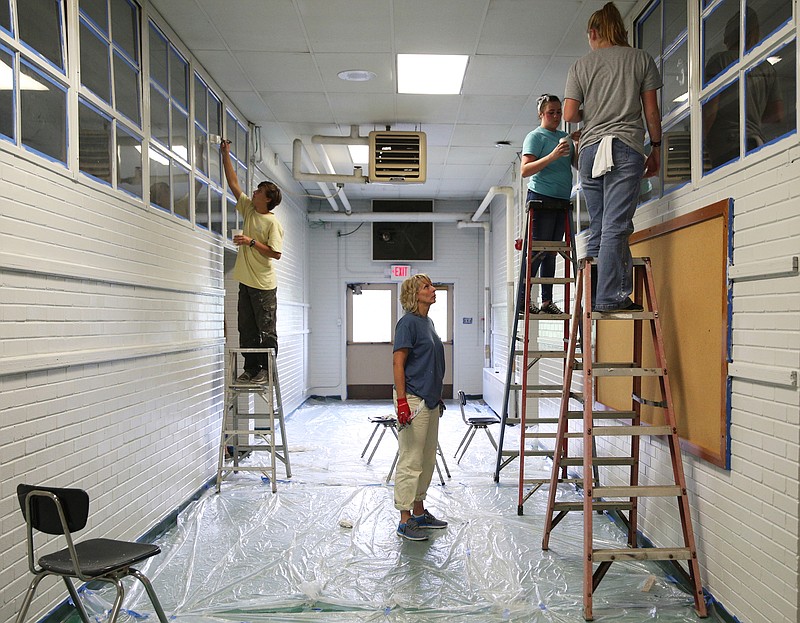We'd like to think Thursday's vote by the Hamilton County Board of Education to allow open enrollment at seven of its schools next fall was profound.
We'd like to believe it was a strategic move to offer real choice to families whose children are attending some of the district's struggling schools.
But it was neither profound nor strategic.
Oh, we don't believe it was bad or wrong, just that it will make little difference. We'll be more than happy to take back our words, though, if the designation proves to be a boon for the district.
Board members voted 6-2 to offer open enrollment at one school at which it has been piloted (Rivermont Elementary), two schools whose test scores put them in the bottom 5 percent of schools across the state (Dalewood Middle and Woodmore Elementary), one school that will reopen next to another struggling high school (Howard Middle, now Howard Connect Academy), three schools at the north and southwest ends of the county (Soddy-Daisy Middle and Lookout Valley Middle/High), and Red Bank Middle.
School officials felt safe in offering open enrollment at the seven schools because all are underutilized. All but Rivermont are below 75 percent capacity, and Lookout Valley Middle/High is at only 54.5 percent capacity.
Rivermont is at 119.4 percent capacity, with almost 44 percent of its students from out of zone. For years a strong school in an upper middle-class community and strategically located nearer the population center of the county, it was an excellent model for an open enrollment pilot.
The others? Well, they all don't offer the same attributes. And that's especially true since parents will have to provide transportation to the schools.
If your child is a student at one of the 12 schools in the district's Opportunity Zone, and you're looking for a different choice out of the dozen focus schools, Woodmore Elementary and Dalewood Middle would not be options. Howard Connect Academy will open in the fall next to another school in the Opportunity Zone, The Howard School.
Soddy-Daisy Middle is the second northernmost middle school in the county, so it is a difficult geographical option for those in struggling schools in the southern part of the county or those in the crowded schools in the eastern end of the county.
Lookout Valley Middle/High, with plenty of room, is accessible only through frequently clogged Interstate 24 or occasionally dicey Highway 41 around Lookout Mountain. Red Bank Middle is at the north end of the city of Red Bank, in the shadow of Signal Mountain.
In addition to capacity, school officials said the decision to seek open enrollment for the schools was to use staff as efficiently as possible and increase opportunities for students.
We do see an upside for students who are so laser-focused on their futures that shifting into a feeder pattern for a high school housing a Future Ready Institute with a desired interest or career choice makes sense. But how many students are that laser-focused when they enter sixth grade?
The school board also voted 6-2 to spend nearly a half million dollars to conduct a multi-layered audit of the district's buildings, its maintenance needs, and a study to predict future growth and capacity.
To us, given that Times Free Press archives reveal numerous building, maintenance and capacity audits, and panel recommendations, made for the board in the last decade and a half, the expense seems inordinate.
As recently as last year, a group of 11 business and community leaders, in analyzing the district's budget and operations, compiled a 70-page report detailing strategies the county and district could implement to bring long-term savings and boost student outcomes.
Among its findings was that Hamilton County had a lower student-to-teacher ratio than other large systems in the state and that consolidating schools would allow the district to reduce the number of teachers and maintenance and utility costs, resulting in annual savings of $15-$20 million.
Earlier in 2017, school board members were given a list of maintenance needs that included the overall costs for every major repair and an occupancy utilization list that included current student populations at each school vs. the capacity of each school.
In 2009, another citizens advisory panel appointed by the school board recommended the district, then facing a projected $20.2 million deficit, cut costs by consolidating schools and slicing the number of teachers. It said the district had a bloated personnel count and too many small and underused buildings, and that it and county were not properly funding school maintenance.
Suggestions were made to close from eight to 14 schools and eliminate from 528 to 1,420 excess staff members. But the board largely ignored that panel's suggestions, ultimately shuttering two schools and combining two more with the construction of a new East Ridge Elementary.
We're not sure what these new audits will show that the previous ones couldn't, or whether an outside firm's recommendations are being sought to give the district and the board cover should similar right-sizing cuts be suggested. It's also interesting a district about which it was said last year could survive for about five weeks on its rainy day fund, now has $500,000 for another audit.
Time will tell if the board will learn anything it didn't know and whether it has the wherewithal to heed the firm's suggestions.
